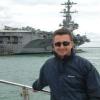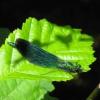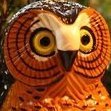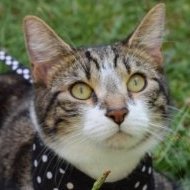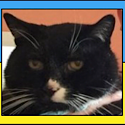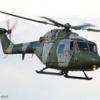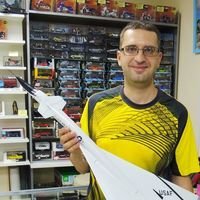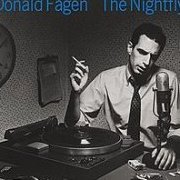Search the Community
Showing results for tags 'Airfix'.
Found 4,073 results
-
Hi, Just finished my Spitfire. Nice kit, although some of the parts are packed very close together and need care removing from the sprues. Added some AM seat belts and decals but otherwise oob. And I believe the spinner spiral may be going the wrong way. That's the way its printed on the sheet. Hope you like it. Regards Martin
-
Dear All It would be nice to know we have our own personal rescue helicopter standing by, I now have my own, albeit in 1/72 scale and unlikely to be able to winch me up! This is the Airfix HAR3 with Eduard PE and the Xtradecal markings for 202 squadron RAF Lossiemouth early 1990s. Perhaps some of you remember this Crab rescue bird? Looking at pictures on the internet, from heavy use some had exhaust streaking down their backs. I don't mind Airfix's heavy panel lines so much on a helicopter and I added my own rivets. The lights are lenses for Little Cars I filled the interior with lots of first aid bags made from putty! Like many Airfix kits I found the engineering ambitious but the fit not perfect Hope you like it? Andrew
- 49 replies
-
- 109
-

-

-
Hi, Just finished my Spitfire. Nice kit, although some of the parts are packed very close together and need care removing from the sprues. Added some AM seat belts and decals but otherwise oob. And I believe the spinner spiral may be going the wrong way. That's the way its printed on the sheet, tho'. https://www.flickr.com/photos/182178379@N02/shares/29X9wR https://www.flickr.com/photos/182178379@N02/shares/7SX485 https://www.flickr.com/photos/182178379@N02/shares/3SE821 Hope you like it. Regards Martin
-
This is the second of my Guadalcanal phase following my PBY-5A completion a few months ago. This is Airfix's kit - easily one of their best recent kits. Undercarriage a bit tricky but not hard if you take time. Vallejo model air paints, kit decals Next up Hasegawa SBD-3...
-
I have a habit, but the less said about that the better. I also have a bit of an obsession with not throwing away any of my old builds from way back when. So I have boxes of broken models languishing in various cupboards, on shelves and other potential storage spaces. One such model, which was sitting on a veritable shelf of doom, was the old 1/72 Spitfire MkV from Airfix. It had been assembled in relative haste with tube glue and a lovely brush painted, highly inaccurate camouflage scheme apparently consisting of humbrol enamels slapped on with the coarsest plastic brush ever made. I had made some rudimentary attempts at weathering consisting of deep gouges in the wing surface into which bright silver paint had been liberally applied. It was now looking rather sorry for itself with one propeller blade broken off but not lost, a missing cannon, chin intake, radio mast and tail wheel. Why was this model not consigned to the bin long ago? I hear you ask, well, I have a bit of a soft spot for this model as it was one of the first where I had made a genuine effort to paint it up like the real thing. I was looking at it and comparing it to the new mould Spitfires that Airfix had produced and I wondered if I could rescue it and make it presentable. Time to try some new ideas. The first was to try cleaning off that awful gobbed on paint without destroying the plastic. I wanted to try out the Mr Muscle oven cleaner 'get's your enamel paint off and disassembles your kit' technique. Sadly I did not think to take a before picture but here is the result of placing it in a plastic zip up sandwich bag and leaving it to soak for an hour or so. Note the really old blue plastic. Mr Pilot's looking a bit pale. Evidence that I didn't have any flesh coloured paint at the time. After some repainting filling of enormous gouges and a little reassembly followed by more filling of enormous gaps and even more sanding I got to this stage Sorry didn't take any pictures of the process to here There was an enormous gap at the seam on top of the cowling which took considerably more layers of filler followed by much sanding than I would have thought possible but I managed to get it smoothed over and invisible. Here it is next to the 2 new Spitfires on the Height of the Battle build Attention turned to the missing cannon barrel. I considered raiding the Channel Dash box set I had as it was the same kit of the MkV in there but, to be honest, they looked rubbish and weren't even round. So.. a bit of brass tube, some plastic rod of the appropriate diameter, superglue, very careful drilling and a blast in a Dremel style power tool with various grades of abrasive and I ended up with this Under the nose you can see one of the failed attempts and the one remaining original cannon. The original canopy was badly fogged on the inside from a blob of tube glue but as I wanted to keep as much of the original as possible I went to work with fine abrasive and then polishing cloths and managed to clean it up. I then glued it on and masked it up. Only then did I take a picture The only items I couldn't find were the chin intake, tailwheel and radio mast which I nicked from the Channel Dash box Oh and note the copious amount of filler on the wing fillet to fuselage joint and, if memory serves, I thinned out the radiator walls and rescribed the lost cowling panel lines. Poked a cocktail stick in the nose, sprayed on a nice coat of primer and... disaster. I split the nose joint A swift repair involving substantial quantities of MrCement layers of Mr Surfacer 500 and vigorous wielding of assorted sanding sticks and I carefully added another coat of primer Preshading done. MkV on the right next to the new Mk1 on the left Xtracrylic Medium Sea Grey applied (again the one on the right ) Xtracrylic Ocean Grey on (I think I have it the right way round) Three Spits one airbrush Dark green on, Sky fuselage band masked and sprayed, yellow leading edges applied and chipping courtesy of an earlier application of Maskol I settled on the scheme for EP120, the mount of Sqn ldr Geoffrey Northcott of 402 Sqn. Merston, August 1943 as supplied by Sky Models Decal set 72-063 And a whole bunch of Techmod stencils after which I went and bathed my eyes in Optrex Matt coat on and some light weathering. I used Tamiya weathering powders to try to tone down the roundels as they appeared a bit bright. After the application of pastel on the roundels Looking good... or so I thought. There is something wrong with this picture. Everyone gets to guess. I shall post my solution either tomorrow evening if someone gets it right or Friday if not
-
Hawker Hunter F.4/F.5/J34 (A09189) 1:48 Airfix Arising from a post war specification during a period where the prevailing government thought there wouldn’t be another conflict for a decade or more, the Hunter took some time to develop into the aircraft we know and love due to the rapid development of aviation at the time and a constant search for better performance. Eventually, the Hunter F.1 reached prototype during the scramble for capable jet aircraft at the time of the Korean war. The F.1 morphed into a single F.3 whilst still developing rapidly until the F.4 came along with additional fuel tanks in the wings and a more powerful variant of the Sapphire engine. Development continued apace with the F.5 following on with another variant of the engine, and so it went on into the F.6, but that's another model entirely. Also by Airfix of course The J34 was an export version of the F.4 in Swedish service where it flew as a replacement to the Tunnan and was in turn replaced by the Draken later on. There were 120 of them carrying a four 30mm cannons and a pair of early Sidewinders, with the task of defending Stockholm if hostilities were to break out. Thankfully the Red Menace never rolled over Europe. The Kit This is an additive re-tooling of the initial F.6 kit (A09185) and arrives in Airfix’s red themed box with five sprues in grey styrene, one in clear, a large decal sheet, instruction booklet in spot colour and two colour sheets of glossy A3 with painting and decaling guides. If you’ve seen or already own the F.6 kit you’ll know what to expect in terms of detail, which is good, and extends to all the usual places of interest within the airframe. The three main sprues are unchanged, but two additional small sprues have been added to this boxing with a pair of new exhaust fairings, inserts for the wingtips to transform the wing to the earlier dog-tooth free wings, as well as some nose, air-brake and other sundry parts. Should be fun! Construction begins with the seat, which has an alternative cushion with moulded-in belts and without for those wanting to use after market. Thoughtful! A new headbox top is fitted, and then the cockpit tub is made up from a rear bulkhead with seat-rail, lower tub, control column, instrument panel with decal and a gunsight. The coaming is moulded into the fuselage, but the beginnings of the nose gear bay is attached to the underside of the cockpit tub beforehand. To prepare the fuselage for closure you need to add a small insert in the rear, add a couple of exhausts under the wing root, and drill a 1mm hole nearby. The remainder of the nose gear bay is fitted after the cockpit is inserted, consisting of two parts within the ribbed nose. Aft of the wing root cut-out a bulkhead with a representation of the first compressor blade of the Sapphire engine is fitted after being painted a silvery colour, and then it’s a case of making up the two trunking halves that form a Y-shape inside and funnel the air from the wing roots to the engine for squashing and igniting. The little exhausts and opening of holes is repeated on the starboard fuselage half, and a pair of cylinders are attached to the nose gear sidewall after which you can close the fuselage. If you’re going for in-flight, there are two small holes on the underside that should be opened up before you apply the glue. You’re advised to place 20g/1oz of nose weight behind the cockpit before you close up, so don’t forget like I’ve done in the past. There’s a new jetpipe on the new sprues and a new rear engine face, all of which fits handily within the rear fuselage insert, which is to cater for the differing exhaust and cowling sizes between the marks. The insert is glued in place under the tail, and it’s time to get out your razor saw. The later hunters had an outer section of the wings with an increased chord that garnered the name dog-tooth for obvious reasons when you look at it. Earlier marks didn’t have this, and with some foresight Airfix have pre-moulded the wings with a cut line inside and a set of supports that prevent the wings from being compressed when that section is removed. Another thoughtful addition. You can cut them from the single-piece upper wing with a scalpel or razor saw as per the diagram and repeat the process for the two lower wing halves. The upper wings are then glued to the fuselage from above, covering the recess that supports the wing panels and stops flexing causing problems with any making good. For in-flight posing, the lower wing panels are joined next along with the optional wheel bay cover inserts, covering up the intak trunks and leading to a nice smooth set of lower wings with closed doors. A single door piece covers up the nose bay too. For the wheels-down model, the three main bay walls are arranged round the moulded-in detail, and a small vane is inserted into a slot in the upper intake lip. For both options, there are a couple of pre-marked holes to drill out if you are fitting the drop-tanks before you close up the lower wings. The new wing inserts can be made up from their halves and inserted into the gaps made earlier, although some modellers may elect to fit them earlier, and at this point I don’t foresee a problem with the prescribed method, especially as there is a nice neat lip on the new parts. With the nose cone fitted earlier it’s on to the tail-feathers with the separate rudder able to be deflected 20o to port and 30o to starboard, while the elevators are each single parts that slot into the tail fin with no options for movement. You can however deflect the ailerons and drop the flaps by 13o either way and 80o down respectively, and add the triangular insert between them, repeated on each side. Providing you’ve not elected to close up the gear bays, it’s now time for the landing gear struts, beginning with the main legs fitting into a recess in the outboard wall of the bay, and adding retraction jack and a prominent rib at the same time in each bay. There is an additional scrap diagram showing where the retraction jack and rib sit within the bay to assist you in getting it right. The lower bay door is captive to the leg, and the two additional doors fit into the bay edge two deep, while the inner bay door is slotted into the centre-line side on two sturdy hinges. The tyres are separate from the hubs and flat-spots are moulded in that will automatically fall into the correct spot on the ground due to the keyed axle on the leg – another nice touch. At the front the yoke is formed from two parts trapping the single piece wheel in place, with bay doors and a retraction jack fitted to the front and rear of the bay. While we’re in the vicinity of the nose, the two “Sabrinas” that collect the spent cannon shells to avoid them being ingested by the engines are clicked into position on their two holes, one each side behind the gun troughs. Moving further back, the conformal air-brake has its hinge fairing added first, then you can either lay it flat for retracted, or add the jack and deploy it for extra visual interest. At this stage the airframe is looking very Hunter-like, and the task list is dwindling. If you are fitting the drop tanks, they are made up from two halves plus a separate pylon each and they fit into the holes you drilled in the lower wing earlier. The wings are finished off by adding the tip lights, with the port one having the pitot probe shimmed between it and the wing, so be sure to fit that first. A blade antenna is fitted behind the cockpit on the spine, but it is only there to be sliced off and sanded back flush once the glue is dried. You then have a choice of a single-piece closed canopy, or a two-piece open canopy, which slides back as far as the antenna location, and remember – there’s no frame at the rear of the canopy, so don't paint one or the purists will lynch you. Markings There are three decal options in the box, one from three of the type's operators and each one is allocated a full page of A3 in colour to assist you with painting and decaling. From the box you can build one of the following: Hunter F.5 No.1 Sq. Operation ‘Musketeer’, RAF Station Nicosia, Cyprus, Sept-Nov 1956 No.3 Sq. Södertörns Flygflottilj F18, Svenska Flygvapnet (Swedish Air Force), Tullinge, Stockholm, Sweden 1959 No.7 Escadrille, No.7 Wing, Chièvres, Belgium, June 1956 Decals are by Cartograf, which is a guarantee of good registration, sharpness and colour density, with a thin gloss carrier film cut close to the printed areas. The stencils are dealt with briefly on a page in the instruction, but are covered more comprehensively on the remaining page of the glossy painting guide where the text and orientation is shown in detail. Conclusion A modern Hunter F.4. What could be sweeter? The regressions from the F.6 have been handled very sensibly and shouldn’t tax even the novice modeller, further consigning the old Academy kit to the back of the stash. Review sample courtesy of
-
Saw these two in my local model shop and couldn't resist the sheer nostalgia (don't worry about the Yak) a d seeing as I'm away from home an oob build with a basic toolkit was just about feasible and give me something to amuse myself after hours. Chassis assembled. Wheels done Some assembly That's the tractor done, I'll weather it when I get home. Now on to the 88mm.
-
Jagdpanzer 38(T) Hetzer ‘Late Version’ (A1353) 1:35 Airfix The Hetzer, as this tank killer is better known now, was based upon the chassis of a Czechoslovakian design that was taken up by the Germans when they invaded and occupied the country and took over the factories. After being deemed adequate for service with the Reich, many variants and hulls were created by German industry as was their wont. The 38(T) was based on a widened chassis, uprated engine, and a low centre of mass, which was achieved by eschewing a traditional turret in favour of a casemate with a limited traverse, putting the onus on the driver to achieve rough targeting, while the gunner fine-tuned his aim using the traverse available to him. The lack of turret and wide sloping hull gave more crew space, which is always at a premium in battle. It was mass produced by Skoda using locally designed and built engines, transmission and other drive-train parts. Further versions were projected, but none of these actually reached service, due to the advancing front lines overtaking the factories. The Kit This is another of Airfix’s collaborative reboxings of Academy kits, while we wait their own new toolings to come on stream. The kit was originally released in 2012, so of fairly recent heritage, and we already know Academy’s output. Arriving in the red-themed Airfix box, there are seven sprues in sand-coloured styrene, a small fret of Photo-Etched (PE) brass, decal sheet and the instructions, it has link-and-length tracks and well-detailed parts, although the exterior plates of the hull have no rolling texture, while the sand-cast Saukopf has a restrained stippled detail moulded into it. The instruction booklet has been Airfixified as much as possible, but it lacks the more modern coloured and shaded build steps. As is common with many AFV kits, construction begins with the lower hull, which receives a large number of suspension parts, springs and axles. The road wheels are lined up four per side and are each a single part, while the drive sprockets have three parts each, with a choice of three styles of idler wheel that sits at the rear of the chassis. The tracks as previously noted are link-and-length, which for the uninitiated comprise long lengths of track links moulded as one part for straight areas, and individual links that go around the highly curved sections such as the idler and drive sprocket ends. In this instance we have one major length for the links in contact with the ground, two shorter lengths on top, with individual links on the curves and a short length on the diagonal sections. The top sections have a little sag moulded-in, which is typical of the Hetzer. The detail of the links is very good, although some modellers will probably replace them with individual metal links that are available from various aftermarket companies. A section of the fender is added to the rear of each sponson, and these are joined by the rear bulkhead that has a small section of spare track fitted on brackets at either side. The upper hull is presented as an almost complete shell, needing just the engine deck (with PE grille) at the rear and the various hatches on the top fitted, along with the first of the pioneer tools and formation lights. Inside the upper hull there are vision blocks and periscopes slotted through their apertures, after which it can be mated to the chassis and the towing cables can be made up using the supplied towing eyelets and a length of cable substitute you’ll have to find yourself with a length of 100mm needed. The side skirts are glued on with stand-off brackets, and the jack is installed on the right rear fender. Now it’s time for the main gun, which is moulded as a single part with a hollow muzzle thanks to a sliding mould. There are three on the sprue, but only two are suitable for this kit, either of which slots into the mantlet (the aforementioned Saukopf), with a larger outer mantlet holding the elevation pivot and mating with the hull’s corresponding hole. The last part is to put together the MG34 machine gun on the roof, with drum magazine and steeply angled splinter screen on each side of the barrel. A sextet of grab handles on the engine deck complete the build, leaving just the two crew members to be made up, with a build and painting guide in black and white at the end of the instructions. Markings There are two decal options in the box, with one pinched by Czech rebels after German service, the other in Russian service, presumably after being captured or after the over-running of the factory during their advance. There are a number of notes to the options at the bottom of their respective pages, which should give you some useful material to make a more accurate rendition of your model. From the box you can build one of the following: Jagdpanzer 38(t) Hetzer (Late Version) attached to Jagdpanzer Kompanie 1359, 359. Infanterie-Division, After capture by Czech insurgents, Hronov, Czechoslovakia, May 1945 Jagdpanzer 38(t) Hetzer (Late Version) attached to the Assault Gun Platoon, First Bulgarian Army, Hungary, Spring 1945 You might notice that the stars on the second option are a little “squiffy”. This is deliberate, as they were hastily applied, probably by unskilled personnel. Otherwise, the few small decals are in good shape in both senses of the word. Conclusion It’s nice to see Airfix putting some more breadth of types into their new range, and we look forward to seeing more as time goes on. Highly recommended. Review sample courtesy of
-
Having retired (again) at the end of last month, plus reducing some pre-planned activities to avoid the Corona virus, I have had more time than usual for modelling. This is my second build of the month, the base kit coming from a local charity shop just after Xmas - it's the old Airfix Tornado GR.1 updated to become a GR.4 from IX(B) Sqn RAF. The kit is not the best representation of a Tornado but it builds well - mine has seen quite a few changes from the basic items supplied in the box, including: - The later Airfix GR.4 Decals - Wing tanks updated to reflect production versions - Replacement LRTMS and FLIR (Avia Graphics) - Sprue/plastic strip update to cockpit - Ejector seat sprue updates - Replacement Pitot (dressmaker's pin - never fails) - Replacement Sky Shadow/BoZ 107 (ESCI and Scratch respectively) - Storm Shadow missiles from Revell Kit (or was it a Rafale?) - Weapons rails from the spares box - Scratch chaff dispensers on inner Sidewinder pylons Clearly, there are easier ways to build an accurate GR.4 model - the Revell kit would certainly be my recommended starting point, but despite the issues with this kit, it came to me very cheaply with the profits going to charity and it used up a number of orphan parts from my spares box, whilst keeping me happily occupied for a few weeks. For me, that is what modelling is all about !!! ....and of course, it wouldn't be me without a group shot of my other Tornadoes! FredT
-
With only 18 days left, I'm pushing my luck here . But I'd really like to get an Airfix P-51D built. It looks lovely and there have already been some great builds on this STGB builds using it. So, opening shots... Nice Airfix box art; Simple sprues; Everything looks nice and crisp, good panel lines, nice detail and flaps which drop! I plan a few AM enhancements, and I'll need to make (or source) some unshrouded exhausts. Decals/Markings; These decals must have been in the spares box for 20+ years... The kill markings are too large and not enough kills. But I can use these to make the right ones (I hope!) And, if I'm lucky, it should end up looking something like this: This was Capt Clarence 'Bud' Anderson's P-51D-10-NA 44-14450, 363rd, 357FG, at Leiston in the winter of 1944/45 with all his kill markings (he ended with 16.5 kills). It had just had its Olive Drab paint striped off, so would have been fairly clean. The wheels were originally white walled (like his P-51B) but time and wear seems to have worn most of it off. Cheers,
-
No. 12 Operational Training Unit, Chipping Warden. While flying night circuits and landings with a Canadian instructor pilot, their aircraft, Wellington BJ622, JP-R, crashed just after half-past midnight, on the night of 11/12th of July. ”12/07/1944: Wellington III, serial no. BJ622 of 12 OTU belly landed at Chipping Warden. Sgt J C Ridley RCAF and crew were unhurt.” This is the Airfix 1959 tool, 1/72 04001 with: Etch – none Additional parts – none Paints – Humbrol, Vallejo Panzer Aces and Vallejo Model Color acrylics by brush Decals – Xtradecal, E. D. Models, Airfix
-
Hi all, Just waiting on a paint re-supply for the Fouga Magister build and this was staring at me from the stash saying ‘build me’. ...So I thought I’d just have a cheeky peek... I was sold as soon as I saw the surface detail - really great, Airfix sure have come a long way with these new tools. I’ve got a set of BRASSIN wheels and a set of indispensable Eduard canopy masks! But basically will be out of the box focusing on the finish - a little faded and weathered as per period pictures. Any info on the build or anything else related to the Mitchell gratefully received. It’s taken no time at all to knock up the innards... Cracking detail, shame most of it will be closed up. Thanks, Guy
- 10 replies
-
- 17
-

-
Sneebo MC-T was the aircraft of Captain Sass of the 79FS, who first flew their Mustangs on 24 July 1944. It has reduced D-Day markings and carried pressed paper underwing drop tanks. There were five black stipes on each wing which were probably to assist when aiming in bombing attacks.
-
I've not built a 1/48 Mustang before The first was a BIN on e-bay after Jadlam couldn’t supply. Then I went on holiday and forgot I'd bought the first and got the second one at Youngs in Barnstaple I have the choice of these decals:
-
A couple of months ago i thought about what to choose as my 1st WW2 plane when a friend gave me this Airfix' Spitfire & Eduard Cockpit as a gift, so descision was made. Since it was the first time i was using a resin cockpit and being only my 4th model at all you confidently can say i'm still a novice in scalemodelling and not everything worked out as smooth as planed. Although i spent quite a bit of time to dryfit & thinning the cockpit several times it was unruly to snuggle in the fuselage when it was time and only with some force and cut offs it worked out, well, lesson learned next time i will do it even more thoroughly. BTW the Eduard Resin Cockpit is a beautiful little mode by itself. Another issue were the numerous paint lift offs by Tamiya tape which really were a pain especially when happens on the edges to the multicoulerd insignias..... One thing i found a bit odd was the landing gear construction by Mr. Airfix, honestly the person who developed this must have been in a joker mood and should be sentenced to glue it A Thousend Times! My first glueing attempt was rewarded with a decent flop down and Mj. Levines Spit laid on its belly...... I add a bomb which was part of the kit and scratched the bomb holder from Evergreen and add the plumbing though i have no idea if Mj. Levines Spit ever carried one so it's a little '' What If '' factor but i find it looks sharp on a Spitfire. In the end i'm pretty happy that i struggled through this build an have this elegant WW2 fighter in my collection. All the best for you current builds! Hans Since not many of the cockpit is visible one enclosed in the fuselage here some snapshots from the building process.... Mj. Levines worn out seat...-.. The kit part were not very convincing so i made ones myself... Not many will be seen later but i know it's there.... I originally painted this in Sky since i first was going for another Vb. Spitfire with a different camouflage...
-
Hello!
-
414822 LC-A Sad Sack was flown by Major Gilbertson. The 77th Fighter Squadron first flew Mustangs on 21 July 1944. 20th Fighter Group, King's Cliffe. Airfix 1/48 NA P-51D Mustang (A05131) Painting Profile: Vallejo Model Air 71094 Green Zinc Chromate FS34258 = cockpit interior, seat, wheel wells, undercarriage door interiors Humbrol Acrylic 26 Matt Khaki = trousers Humbrol Acrylic 11 Metallic Silver Fox = paint chips, navigation light reflectors Humbrol Acrylic 24 Matt Trainer Yellow = propeller tips Vallejo Model Air 71063 Silver (Metallic) = spinner nose, 110-gallon paper drop tanks Humbrol Acrylic 33 Matt Black = radio equipment Vallejo Model Color 70863 179 Gunmetal Grey = oil cooler Humbrol Acrylic 56 Metallic Aluminium = belly inlet and exhaust, pylons Hu: 61 Matt Flesh = skin tones Games Workshop 61-76 Flesh Wash = skin tones Humbrol Acrylic 62 Matt Leather = seat cushion, highlights to flying jacket and flying helmet Vallejo Panzer Aces 333 German Tank Crew = instrument panel, control column grip, radio equipment, head rest AK Interactive AK480 Xtreme Metal Dark Aluminium = 750-gallon metal drop tanks Vallejo Panzer Aces 310 Old Wood / Vallejo Model Color 70828 182 Woodgrain (Transp) = cockpit floor Vallejo Model Color 70884 104 Stone Grey = safety harness Vallejo Model Color 70994 166 Dark Grey FS36081 = hose Humbrol Pot 60 Matt Acrylic Red Mix = knobs Vallejo Model Color 186 70934 Transparent Red = leading and port navigation lights Vallejo Model Color 187 70936 Transparent Green = centre and starboard navigation lights Vallejo Model Color 184 70935 Transparent Orange = trailing navigation light Humbrol Acrylic 238 Gloss Arrow Red = 110-gallon paper drop tank bands Vallejo Model Air 71063 Silver (Metallic) = wings Alclad2 ACL-119 Airframe Aluminium / AK Interactive AK479 Xtreme Metal Aluminium = fuselage LC-A Alclad2 ACL-121 Burnt Iron = exhaust stubs AK456 True Metal Dark Aluminium = selected fuselage panels Humbrol Acrylic 155 Matt Olive Drab = anti-glare panel Humbrol Acrylic 21 Gloss Black = nose ring Vallejo Model Color 70950 169 Black / 70855 205 Black Glaze = guns
-
Here we go - I have the green light to inflict the original tool Airfix P-51D 'Fool's Paradise IV' on this GB - sorry, chaps. Dependent on time, I may bring in newer tool kits as I go along. I've got the Red Stripe Bag 'boxing'... The kit comes in silver-grey plastic, only 30 parts. Raised detail outside but absolutely zero detail inside the cockpit area, other than two pins for the pilot to perch on. That said, the pilot has gone AWOL so I'll need to set up an 'office' that will tempt him back. All the gen on the 'North American P-51D Mustang' - I fancy doing a check on how this lines up with the wealth of reference material made available here. Ditto for the colour scheme given for this particular aircraft...
-
Johnny Horton, you don't know what you've started! I bought this set back in 2011, cost 28 Euro. It seems like only yesterday. Actually, it seems like only yesterday when I first "built" the Bismarck, circa 1978. I built it again in 1984, but I've never built any of the other kits. It's a pity Airfix never added more ships to the original "Naval History" range. Surely a KGV/PoW kit, and another of Rodney, would both have been sure-fire winners? Almost all the parts (nearly 300) seem in good condition. These kits are going to be built mostly out of the box. Some parts may have to be thinned (masts, some guns). The first task will be to cut the Bismarck hull down to size, which could take a while. Basically, I'll have to remove the base, and maybe a small bit more. I prevaricated over what to build, but I didn't want to renege on my original commitment to build something "floaty". I thought about the Airfix Belfast, but as someone else is doing that, I came back to this set. Other candidates included the Revell 1/700 Tirpitz, and even the ancient 1959 Revell HMS Victory. In the case of the latter, sanity eventually prevailed, and I put it back into storage. I also thought briefly about the Heller 1/400 KGV, and even the Trumpeter 1/700 Hood (1941), which is actually a considerably more complex and detailed kit. The Heller 1/400 Jean Bart and Richelieu were both briefly considered, but they are going to be kept for the proverbial rainy day, or more likely retirement. Ditto for the Revell (ex-Otaki) 1/350 Missouri. I'm not committed to any other Group Builds for the next few months, but I do have plenty of other "in progress" kits (and then some) that need to be completed. Between that and the fact that I rarely build ship kits nowadays, this set seemed the sensible, if somewhat conservative choice. If time allows, I may add another kit to the build.
- 18 replies
-
- 10
-

-
3rd finish of the year is the lovely little Hunting Percival Jet Provost T4 from Airfix, this was another Lidl special buy for £5 and weel worth it! only filler needed was around the jet intakes and the front of the wing/fuselage seam other wise excellent. Cockpit is detailed enough OOB with decal for the IP and molded seat belts, I think the way Airfix designed these seats is the best way having a separate seat cushion which made painting much better. Built OOB and painted with Tamiya acylics although Tamiya X7 is not quite bright enough to match the signal red these were painted it looks close enough from 3 feet. As usaul all comment welcome.
-
Hi All Starting on my Airfix 1/72 Ju87B-1.
-
I better come up with a build as well. As the title states, I am building the Ju 87R-2 flown by Major Walter Sigel Commanding Officer (Grupenkomandeur) from I./St.G 3 in the colours of the Stabsstaffel (green) during his time in Greece 1941. I haven't seen many (actually any) builds of his Berta which is odd as it has some attractive markings. Sigel’s various Stukas are relatively well documented, but there is some confusing information about the looks of his Bertas. Xtradecals has his B-1 covered on sheet X48164 (and also on the 1/72 sheet) when part of I./St.G 76, but these markings are unfortunately not correct for a I./St.G 3 aircraft, so I have to come up with my own marking one way or another. I found this picture below on the Internet and have never seen it published anywhere. It shows most likely Sigel’s aircraft in Balkan theater markings photographed in May 41 at Argos in Greece. Of interest are the white outlined green individual letters A on top of the wings and the yellow elevators. Together with the yellow nose and yellow wheel pants tips it is indeed a very colourful example. The picture below is published in many publications and does also show Sigel's aircraft. Captions place this image from France in early 41 to Bulgaria in April 41, to Zemun (near Belgrade) in Yugoslavia in Autumn 41 and to Greece in 41 depending where the picture is published And most profiles show it like this. But white theater markings just don't add up for the places this picture was apparently taken, so I asked the question on Hyperscale if someone could shed some light on this. In addition, the green Winkel (chevron) is missing on many profiles and the squadron batch is white and not yellow. The chevron is clearly visible on another picture taken at the same day. And Georg Morrison had an explanation which is rather interesting: "This is part of a series of lined-up I/St.G 3 machines (S1+AB, S1+CB, S1+NH, among others) taken after the Balkans / Crete campaign in southern Greece (possibly Crete) in early November 41. The yellow theater markings had been overpainted and white theater markings applied for the unit's move to Derna in North Africa in mid-November 1941. Depending on the quality / vintage of the print, you can see a tonal difference (the paint is 'flatter' or 'more matte') on the cowlings. The area beneath the radiator was still yellow -- there's some film footage in which the bright color beneath the radiator 'pops out' at the eye of the viewer as the formation passes above. The fuselage bands were white, albeit not as bright as the factory-applied fuselage cross." The flat paint is indeed visible on both pictures above and of interest is also that this aircraft also had yellow wheel pants tips, which wasn't common, making it more likely that both aircraft are potentially be the same aicraft. My intention is to build Sigel's aircraft first in the full Balkan theater markings as seen on Argos in May 41 And after taking a series of pictures, I intend to do what happened to the real aircraft and change it by overpainting the relevant parts as described above to the way it looked like before the transfer to North Africa in November 41. Not often do you see Luftwaffe aircraft with yellow AND white theater markings! I will use the 1/48 new tool Airfix B-2/R-2 kit for this build. And I did find some additional goodies in my stash I may use. So I am all set, but with my track record I may not get past the cockpit stage Cheers, Peter
- 54 replies
-
- 13
-

-
Mikoyan Gurevich MiG-17F 'Fresco' (Shenyang J5) A03091 1:72 Airfix Although outwardly similar to the MiG-15, the MiG-17 was in fact a heavily revised design that drew upon the lessons learned in the development of the USSR's first swept-wing fighter. While the forward fuselage, landing gear and engine were carried across from the MiG-15, the rear fuselage was longer and more tapered. The wing was entirely new as well, being both thinner and more sharply swept. This both raised the maximum speed of the aircraft and aided controllability at transonic speeds. Although it shared its armament with its predecessor, it also gained a radar gun sight, cribbed from a captured F-86. The MiG-17F was fitted with an afterburner, which significantly boosted the rate of climb and meant supersonic speed was just about possible in a shallow dive. The MiG-17 was built in huge numbers, with over 10,000 rolling off Soviet, Chinese and Polish production lines. It was used in combat by several nations, most notably in the Vietnam War where it was credited with 28 aerial victories. The MiG-17 hasn't been all that well represented by manufacturers of plastic kits over the years. Efforts from the likes of Hasegawa, KP and Dragon all have their problems and are all showing their age, while the otherwise rather good AZ Model kit is limited run and by all accounts the moulds are starting to show their age. Enter Airfix with an all-new tooling. Inside the box are three frames of grey parts, a small frame of clear parts, instructions and decals. The parts are nicely moulded but the panel lines are on the heavy side, which is always more noticeable on a small kit like this. From reading Airfix's workbench blog it's clear that this is a Lidar-scanned model, so the dimensions and general arrangement of shapes should be spot on. Despite this, there has been some debate about the accuracy of the kit on this and other forums. I have found our own KRK4m's analysis very helpful in that he confirmed the kit is very accurate in scale and general outline, but has an issue in terms of the leading edge of the wing (easy fix) and the aerofoil cross section (not an easy fix). Of course the stark reality is that these issues won't concern most modellers, so with that in mind, let's have a look at what is in the box. Construction starts with the cockpit, and like most kits of the MiG-15 or -17, the cockpit tub is made up of parts that also form the inner part of the intake fairing. Moulded detail is actually very nice. Not on a part with Eduard's MiG-15, but then the two models are not really comparable in terms of engineering and philosophy. Decals are provided to add extra detail to the instrument panel and sidewalls. I'm not sure what happened to the ejection seat, but Airfix appear to have carried this across from the MiG-15 rather than replicating the seat commonly fitted to the MiG-17. Should this trouble you greatly, aftermarket alternatives are available. Once the cockpit sub-assembly is complete, the engine exhaust and afterburner can be assembled. Because the external faces of the jet exhaust also double up as the insides of the air brake assembly, there are alternative parts with and without moulded detail for this area - a really nice touch from Airfix. Once both of these parts are assembled, the fuselage can be joined. A clear part which represents the radio compass cover must also be fitted at this stage. Once the fuselage halves have been joined, the front-lower part of the fuselage, which includes the muzzle detail for the cannons, can be fitted, along with the engine air intake fairing. The wings are next. If you wish to fit the optional drop tanks, you will need to drill the pre-marked holes in the lower wing surface at this stage. The wings are pretty simple to build, with the wing fences moulded in place. The kink in the wing leading edge is present and correct, but you may wish to re-profile the leading edge if the apparent lack of sharpness troubles you. Personally I can easily live with this on an aircraft so small. With the wings in place, the tail planes can be assembled. The landing gear is nicely detailed and there are some nice touches such as detail moulded on the inside of the gear doors. As mentioned above, the air brakes can be fitted in open or closed positions, although you'll need to have committed to one option or the other earlier in the build process. The canopy is nicely made and has the periscope moulded in place. There is even an oil drum included to prevent the model from sitting on its tail if you didn't manage to cram in the necessary 20 grams of weight. Two options are provided on the decal sheet: ⦁ MiG-17F 3020, flown by Le Hai, 932nd Fighter Regiment, Vietnam People's Air Force, Tho Xuan, August 1969. This aircraft is finished in a disruptive two-tone green scheme; and ⦁ MiG-17F 'Blue 51', Nauchno-Issledovatel'skiy Institut Voyenno-Vozdooshnykh Seel (NII VVS – air force scientific research institute, USSR, 1970s. This airaft is finished in overall silver. The decals themselves look thin and glossy and a full set of stencils are included. Conclusion Although this kit isn't perfect, by my reckoning it is still just about the best MiG-17 available in the scale. It's a shame that the kit has some niggling issues, but I'm going to stick my neck our and say that they shouldn't detract from the fact that the kit is accurate in size and outline and should be a fun, straightforward build. I'm certainly looking forward to building mine. Review sample courtesy of
-
Dear Colleagues Here is the founding father or is it the patron saint of Britmodeller, the EE Lightning! This is the Airfix kit boosted with Aires exhausts, Eduard PE, Quickboost air scoops, Pavla cockpit and Master pitot tube (which speared my finger on one occasion). Can't say it was an easy build regarding fit. The F2A was only to be found in 19 and 92 squadrons based in Germany and only 31 aircraft existed. They were operated by 19 squadron at RAF Gutersloh until 1976. I didn't want to do exactly the same aircraft as the Airfix markings so found a photo on the internet of this bird and used the Extradecal decal extras set for Lightnings The figure gives you an idea of the size of the beast Hope you like it? Andrew
- 30 replies
-
- 83
-

-


